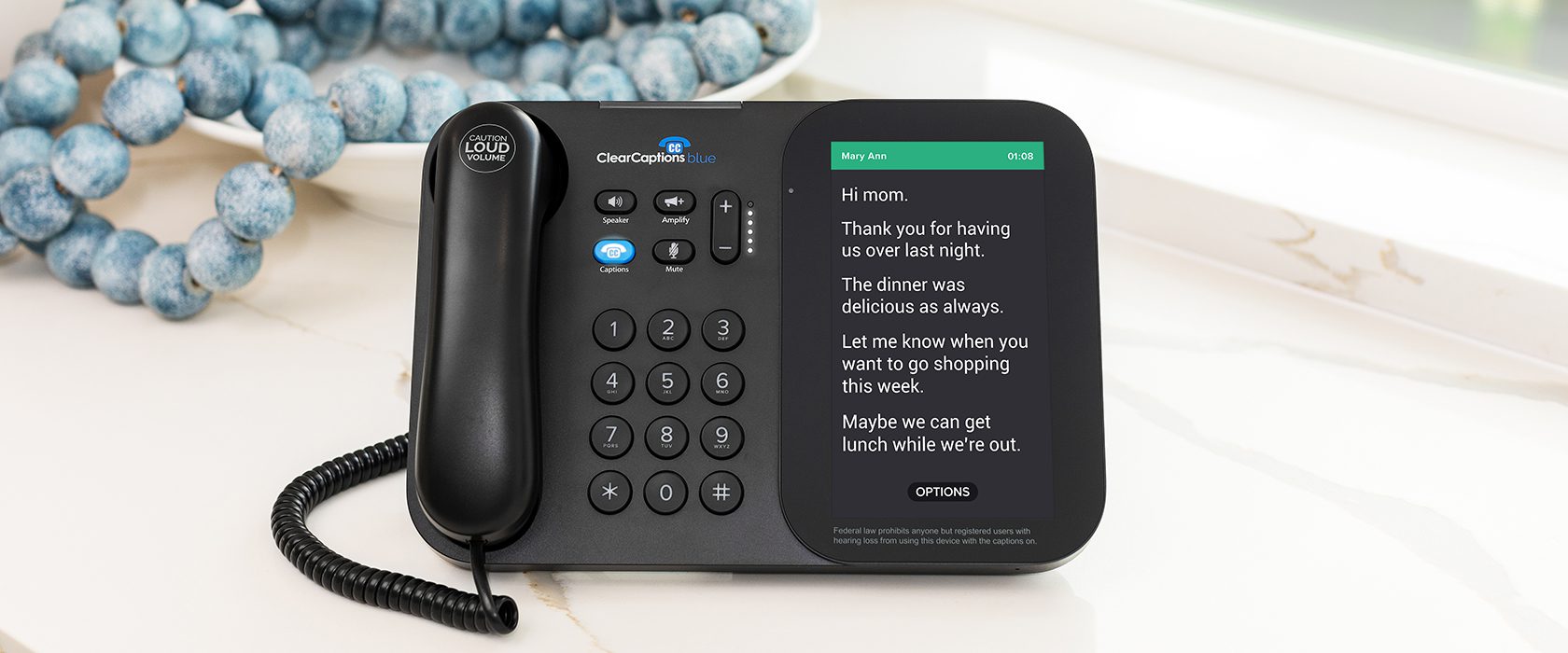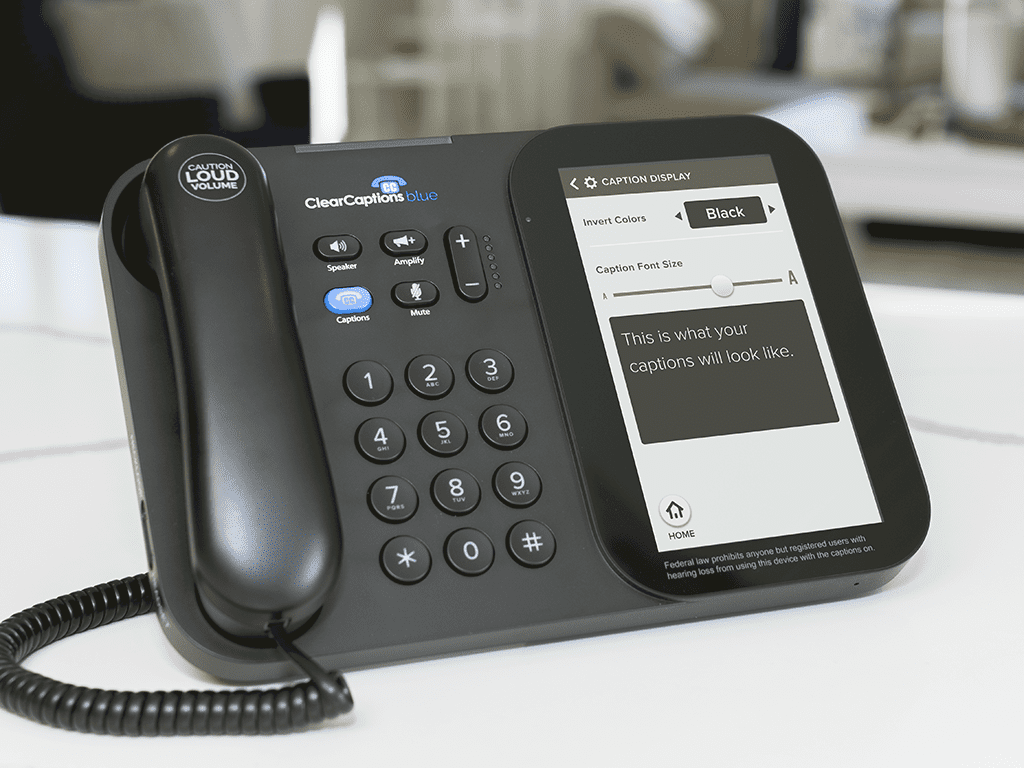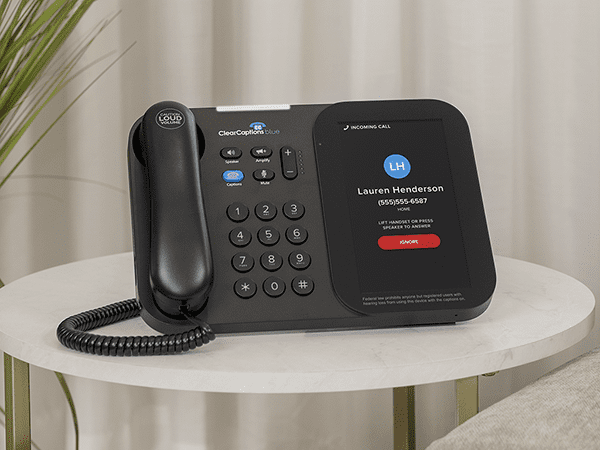7 Tips for the Best Captioning Experience

Make the most out of your captioned calls
Do you find yourself asking people to repeat themselves during a conversation more times than you’d like to admit? Maybe you’ve noticed that the volume on your stereo is turned up all the way just for you to enjoy a classic by Frank Sinatra. Well, you’re not alone! Hearing loss is more common than you think, but it’s how you adjust that makes all the difference.
Whether you’re staying in touch with family and friends with a simple phone call or discussing appointment dates with your doctor, hearing loss can cause frustration at some point–especially when you’re unable to hear every word being said on the phone. Thankfully, call captioning makes it easier. Maintain your confidence and independence the next time you make or receive a call with your caption phone or mobile app.
What is Call Captioning?
Internet Protocol Captioned Telephone Service (IP CTS) helps people with hearing loss easily communicate and use the telephone more effectively. That’s right! If you have difficulty hearing over the phone, using a caption service provider and an internet-enabled phone can make phone conversations a whole lot easier with near real-time captions.
As one of the Federal Communications Commission (FCC) certified telephone captioning providers, ClearCaptions serves the hard-of-hearing community using a combination of advanced voice-recognition technology known as Automatic Speech Recognition (ASR) as well as live Captions Agents that ensure every word you see is as accurate as possible.
Although there may be a slight learning curve when you first use your caption phone, don’t worry–it’s a small one! Like many others who depend on captioned calls, you might feel overwhelmed at first. From adjusting how small or big captions appear, to saving your conversations to review later, there are many things you can customize and adjust. So, how can you make your captioning experience the best one? These seven tips can help!
7 Tips for the Best Captioning Experience
- Ask the person you are speaking with to speak clearly and slowly. It is important to let your caller know that you are hard-of-hearing and using a caption phone. There may be a delay in your response while you finish reading so it’s beneficial to remind the person on the other end that you’re still there and listening. This can help your caller become aware and less likely to rush you, repeat a question or even hang up.
- Expect a slight delay in captions that appear on your screen. While captions are near real-time, sometimes a slight delay is normal. ClearCaptions uses a combination of advanced speech recognition software for the majority of calls, and in some cases a live communications assistant to quickly provide captions of what your callers say. Occasionally at the beginning of the call, it can take a moment for captions to appear on your screen.
“I always tell whoever I’m talking to that I have hearing loss and using a caption phone, and if I don’t answer right away it’s because I’m waiting for the captions to catch up. They’ll say, ‘Oh okay!’ Without ClearCaptions I probably wouldn’t be making phone calls otherwise.”
– Teri, ClearCaptions customer
- Eliminate background noise. Sometimes the software or captioner may pick up words from a television or stereo. For accurate captions we advise that you ask your caller to reduce any loud background noise.
- Enlarge your font size. Your ClearCaptions phone is customizable. For example, you can increase the font size on your phone which may help you see your captions more clearly. Tap Settings on your home screen, tap Phone, and then tap Captions Display. Watch the ClearCaptions video guide for using captions. for a visual guide on how to access your settings and adjust your caption display.

- Adjust auto brightness. You can adjust your screen’s brightness so that it’s easier for you to read captions on your screen. Just tap Settings on your home screen then tap Display!
- Autosave your captions. You may need a little reminder once your conversation ends and that’s perfectly fine. Whether it’s important dates or appointment details, you can always revisit your conversations for things you may have missed.
- Make sure your phone is hung up properly or you might miss future calls. It is important that your handset is set firmly in the cradle, or it will not hang up. Look for the Light Bar that serves as a visual indicator. It will be turned off once you hang up the phone properly.

Your Captioning Experience Depends on You
Remember, your call captioning experience starts with YOU. Customize your caption phone to best suit your needs and enjoy the benefits of captioned calls your way.
Our Customer Experience Team is more than happy to get you acclimated with your new phone. Contact our team at 866-868-8695 or email us at support@clearcaptions.com. One call is all takes to make a difference in your call captioning experience, but if you make use of these seven tips you’re certainly headed in the right direction. You’ll be happy you did!




